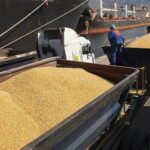According to the latest reports, the Organization of the Petroleum Exporting Countries (OPEC) has announced its decision to suspend the planned production increase scheduled for the first quarter of 2026. Although the organization had originally planned to increase oil production by approximately 137,000 barrels per day in December 2025, OPEC+ (OPEC and its allies) ultimately opted to pause the production hike to address potential oversupply concerns and stabilize global oil prices. This move signals a more cautious and conservative strategy by the group in the global oil market, aimed at avoiding a potential oil price collapse caused by overly rapid production increases.
Reasons Behind the Production Pause
The decision by OPEC+ to suspend production increases stems from a complex interplay of multiple market variables. On the demand side, seasonal patterns form the fundamental premise—the first quarter is traditionally a slow season for global oil consumption. Particularly after winter heating demand subsides in the Northern Hemisphere, crude oil consumption in transportation, industrial production, and other sectors often experiences a temporary decline, naturally placing downward pressure on the supply-demand balance. Deeper impacts stem from the convergence of multiple uncertainties: the global economic recovery shows divergent trajectories, with growth momentum weakening in some major economies, directly constraining crude demand growth expectations; supply chain disruptions remain unresolved, intensifying market concerns about demand stability; and geopolitical risks, such as the ongoing Russia-Ukraine conflict, inject persistent instability into oil markets by affecting energy transport route security and the trajectory of sanctions policies.
Notably, even as the International Energy Agency (IEA) projects global oil demand growth through 2026, the combined effect of these factors has made the risk of “production increases potentially triggering oversupply” a widely accepted consensus. From this perspective, OPEC+’s decision to pause production increases represents a rational response to current market realities. It also reflects the alliance’s cautious assessment of the global energy market outlook—particularly maintaining vigilance against uncertainties such as whether demand growth can match supply increases in the coming months and whether geopolitical and economic variables may trigger sudden disruptions.

Market Reaction and Future Outlook
The decision to pause production increases has had a significant short-term impact on the global oil market. The slight rebound in oil prices following the announcement indicates a positive market reaction to OPEC+’s decision. Brent crude prices rose in the short term, reflecting market approval of the slower production growth. However, while oil prices may stabilize and rise moderately in the near term due to the pause in output increases, the global oil market still faces significant challenges in supply-demand dynamics over the long term. With production growth from non-OPEC producers like the United States and Russia, it remains to be seen whether OPEC+’s strategy of suspending production increases can truly stabilize oil prices.
Furthermore, this move by OPEC+ will influence decision-making among global oil companies, refineries, and oil market investors. Producers may adjust production plans in response to this decision, while investors will likely adopt a more cautious stance in assessing oil price trends. OPEC+ has also indicated it will continue monitoring market developments and plans to reassess its production policy at its next meeting in December 2025.











